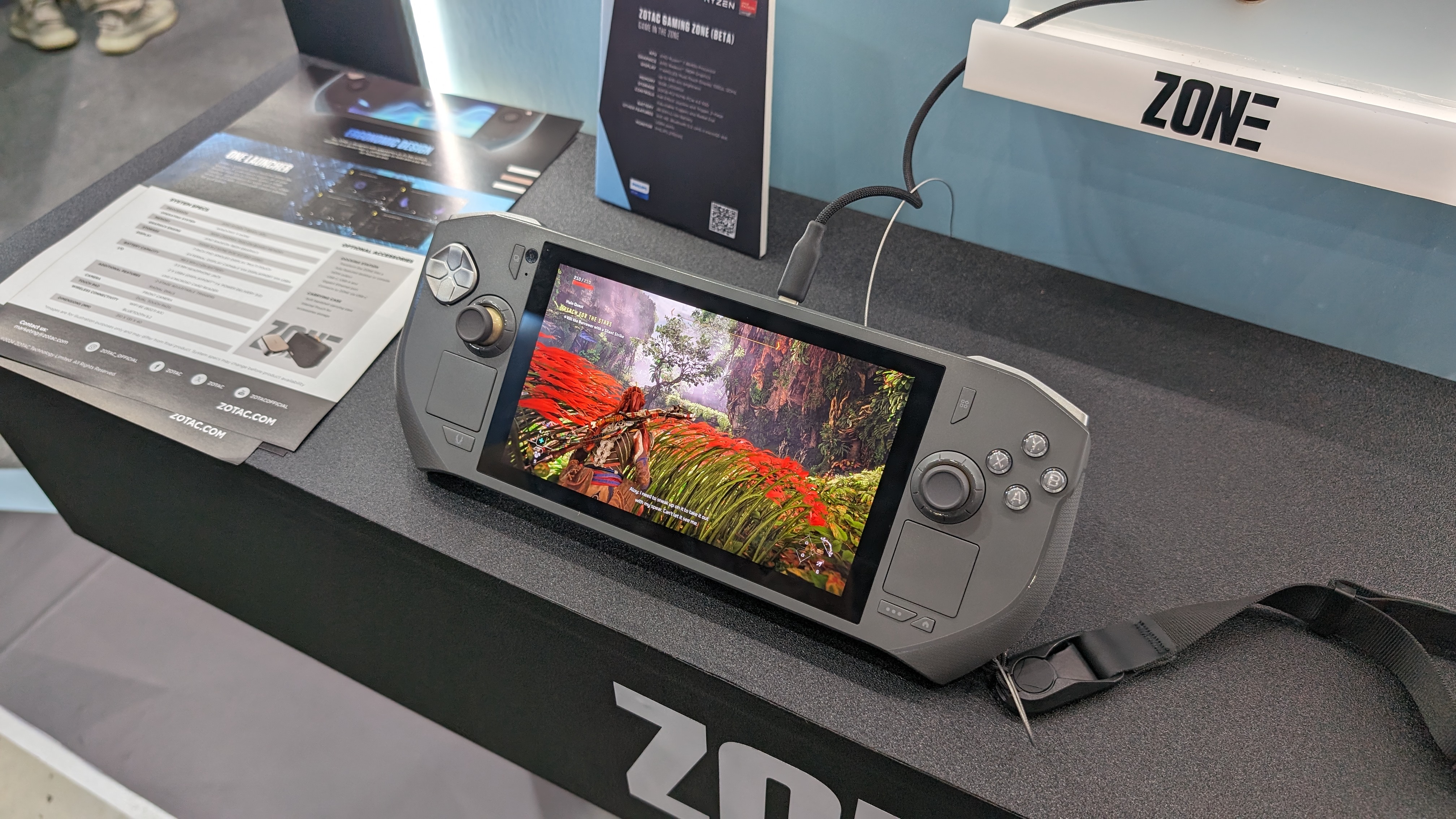
Another month, another rival to Valve's popular Steam Deck gaming handheld. Yes, now PC gaming brand Zotac has thrown its proverbial hat into the ring, revealing its own handheld PC at Computex 2024 in Taipei, Taiwan.
The Zotac Zone (yes, I know Zotac formats it as ZONE, but I don't want to feel like I'm yelling at you!) will feel immediately familiar to anyone who has used any of the mainstream handheld PCs currently on the market. The MSI Claw, Lenovo Legion Go, and Asus's shiny new ROG Ally X all have their own strengths and weaknesses, but at the end of the day, they're broadly similar devices, and the Zone is no exception.
The physical design is immediately reminiscent of the Steam Deck, since it features a pair of small square trackpads beneath the analog sticks, something notably absent from most of the Deck's existing rivals (the Legion Go has a single pad on the right-hand side). However, the controller layout and general feel of the device is a lot closer to the ROG Ally - and having used my own Ally extensively, I can say that this could be a real competitor.
Screen queen
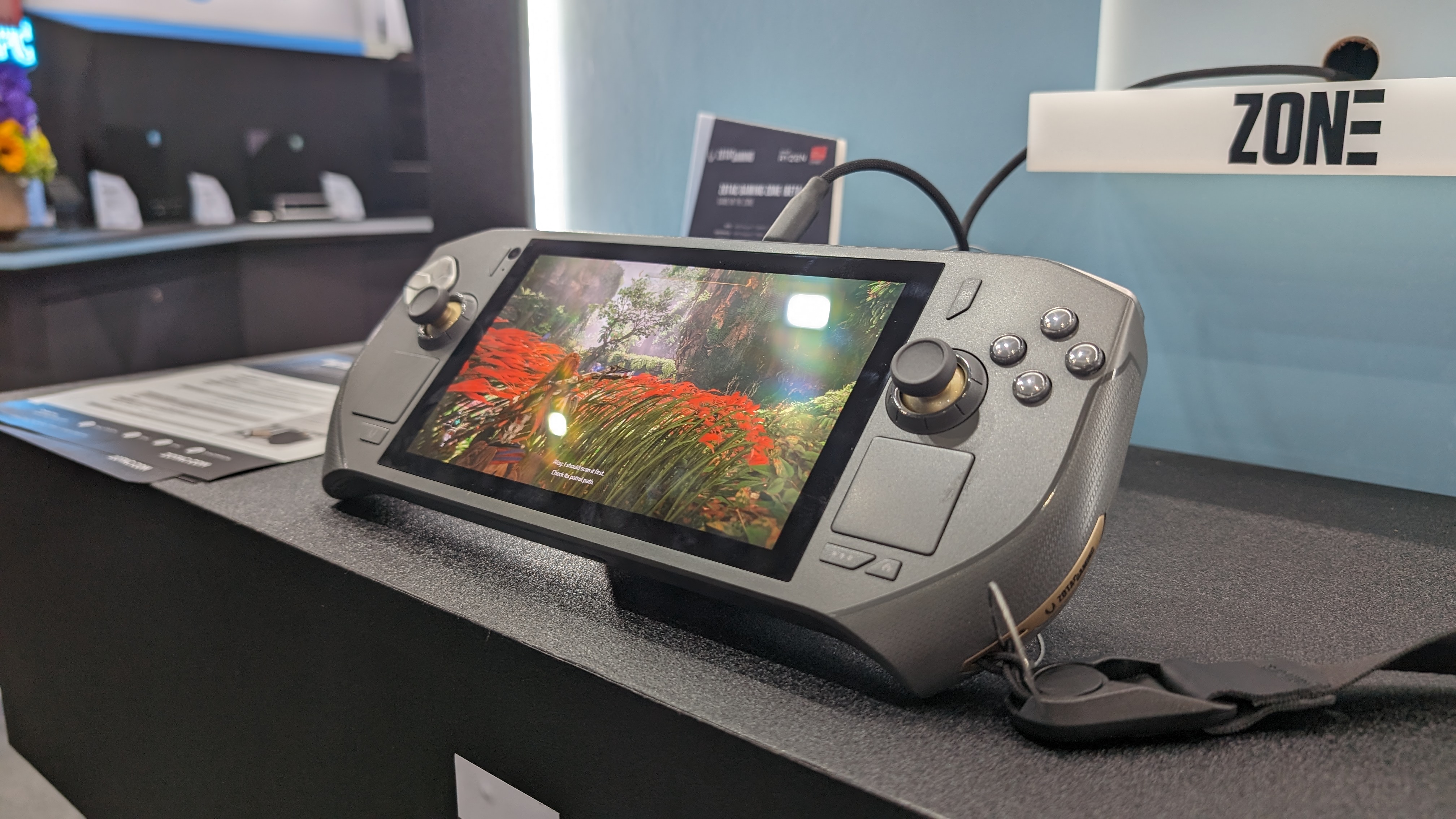
The star of the show here - and the thing I noticed first about the Zone - is the 7-inch AMOLED touch display. With a resolution of 1080p, 120Hz refresh rate, and impressive maximum brightness of 800 nits (more than most other PC handhelds), it's a stand-out feature that looks absolutely bloody gorgeous.
That's truly not hyperbole: I played Horizon Zero Dawn and Street Fighter 6 on this thing, and both games looked fantastic. Colors are vibrant and shadows are deep, with no visual artifacts and excellent sharpness. It's no exaggeration to say this is one of the best displays I've seen on a gaming handheld. It's worth bearing in mind, however, that this is a MIPI panel, which means it doesn't support Variable Refresh Rate in games.
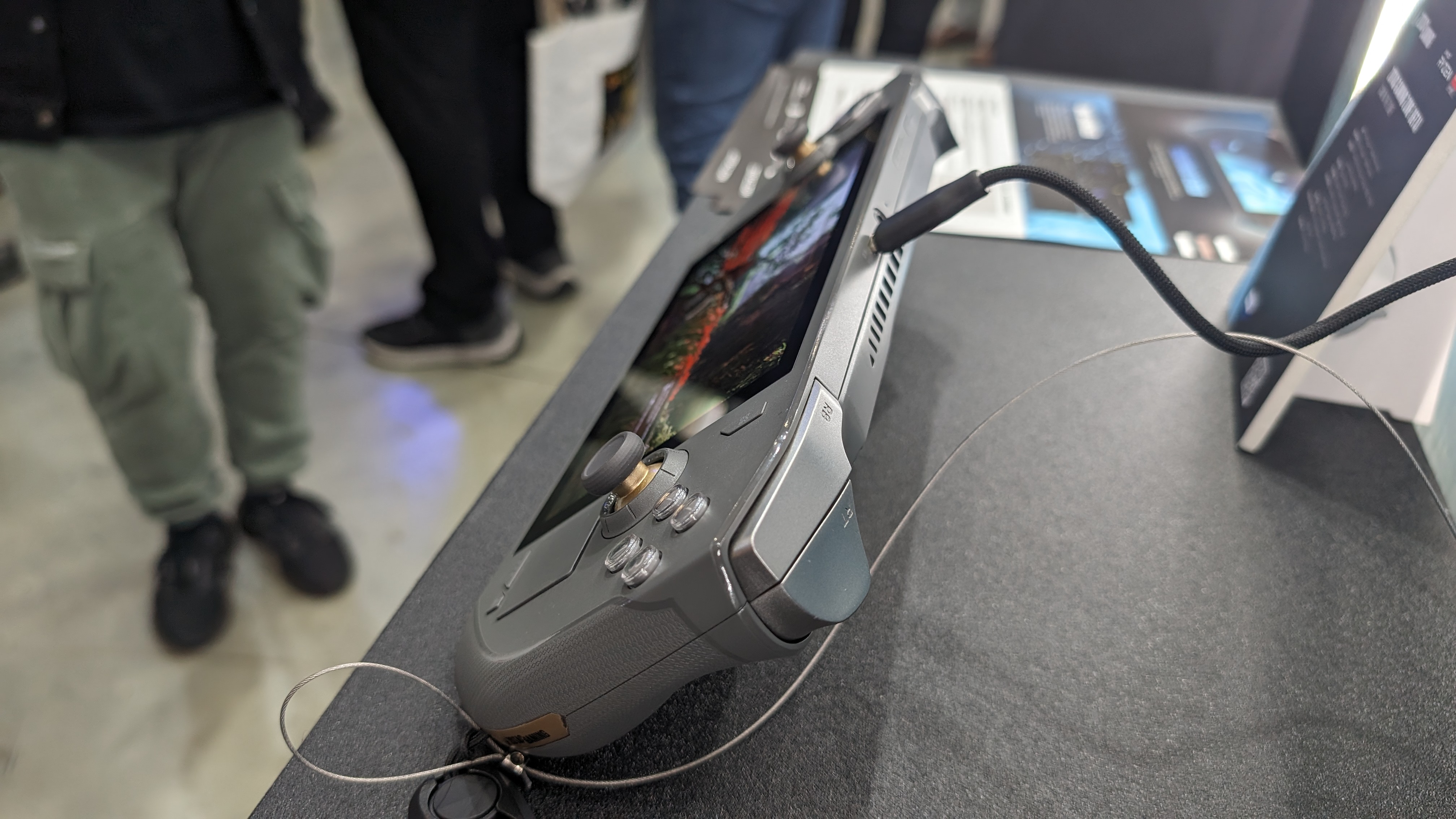
Behind that glorious screen is an AMD Ryzen 7 8840U processor, which delivered solid performance during my hands-on testing. The RDNA 3 integrated graphics perform admirably - and while I wasn't able to properly test framerates, playing on the Zone felt smooth and responsive at 1080p with graphics set to Low or Medium. The Ryzen APU is supported by 16GB of DDR5 RAM and a 512GB SSD.
The 8840U is a bit different from the AMD Z1 and Z1 Extreme chips found in several other handhelds (including the Ally and Legion Go), but it has the same number of cores and the same operating frequency. It's just a slightly newer architecture: Hawk Point as opposed to the Z1's Phoenix Point. The main difference here is an improved XDNA processor for better performance with AI workloads, which may come in handy for AI-powered game features like AMD FSR.
Trigger happy
One unique feature I quite liked was the adjustable trigger system. On the back of the unit, both main triggers have a small switch that lets you swap the trigger sensitivity between two stages - basically switching between a normal full press to register input and a hair-trigger response.
It's a neat function that could come in handy for shooters, since the triggers have quite a lot of travel in regular mode, and it's good that the two switches can be toggled independently - I could see myself using the hair-trigger mode on the left trigger for quicker aim-down-sight reactions but sticking with the regular input for actually firing my weapon, so as to avoid misfires.
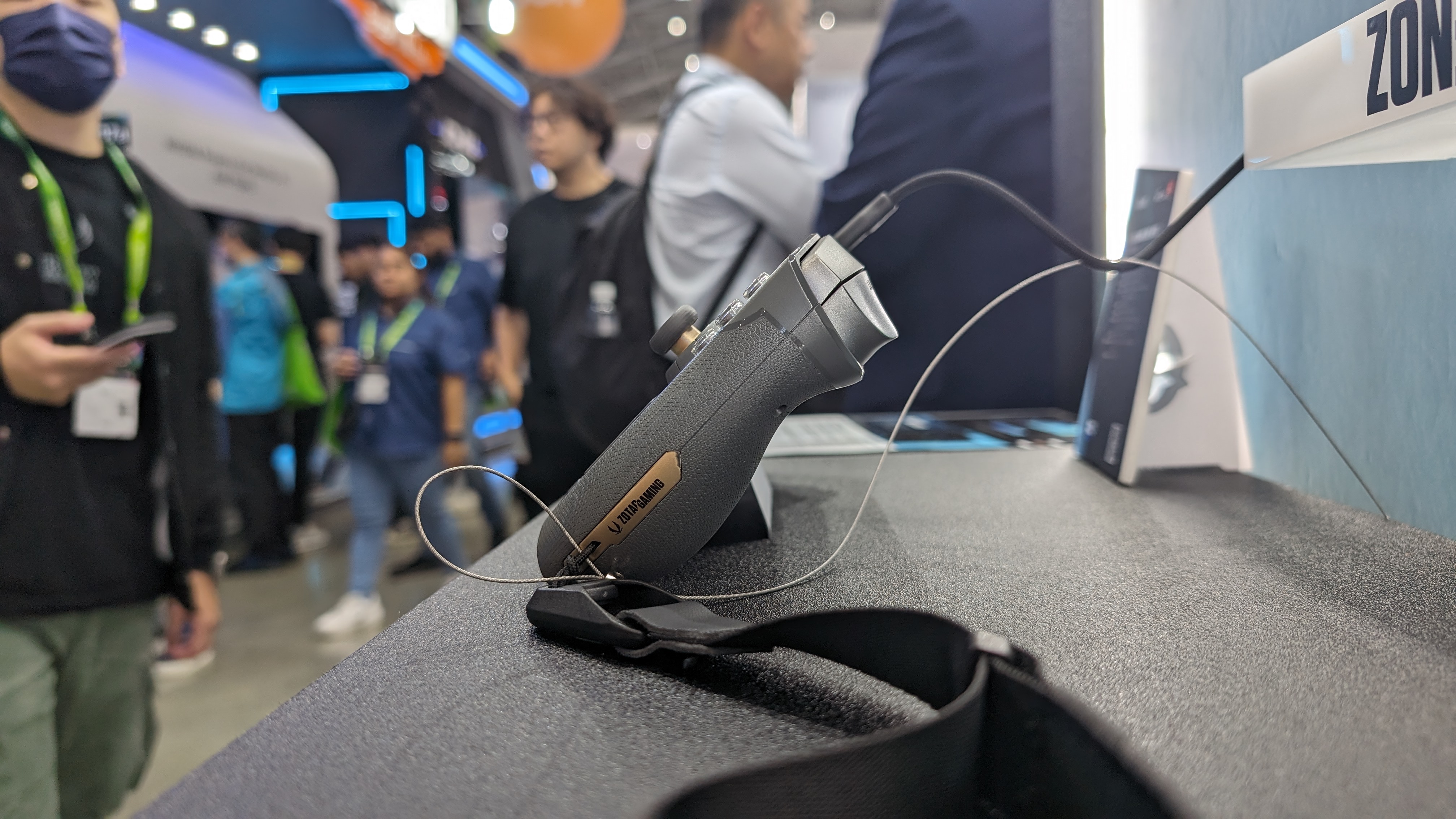
Another possible first for gaming handhelds is the inclusion of what looks like a small front-facing webcam to the left of the display. Zotac didn't have any information about this on the event floor, however, and early test units of the Lenovo Legion Go also featured a camera that never made it to the final release, so don't get your hopes up.
I didn't get an exact figure for the weight, but the Zone weighs about the same as the newly-announced ROG Ally X - which is to say, heavier than the more compact Steam Deck, but lighter than the chunky Legion Go. Despite this, it's still quite large, measuring 31cm across, so this might not be the best choice for gamers with smaller hands. There's a small kickstand at the back, which is useful if you want to hook it up to a larger screen via the Thunderbolt 4 port and play using a separate controller.
AMOLED you finish, but...
Unfortunately, no fancy trigger systems nor gorgeous AMOLED screens can hide the fact that some parts of the Zotac Zone feel a little... cheap. Zotac assured me that the unit I was testing was a relatively early beta model, so there's every chance my qualms will be addressed before the product makes it to a full release, but I'd be remiss not to mention the issues here.
Firstly, the D-pad felt very flimsy, and the analog sticks were a bit loose for my liking - some people might not be bothered by the latter, but I definitely prefer the more resistive feeling of the ROG Ally's twin sticks. The additional two rear finger bumpers are also lacking in satisfaction, with a feeble click to them. On the bright side, the triggers, main bumpers, and face buttons all feel solid.
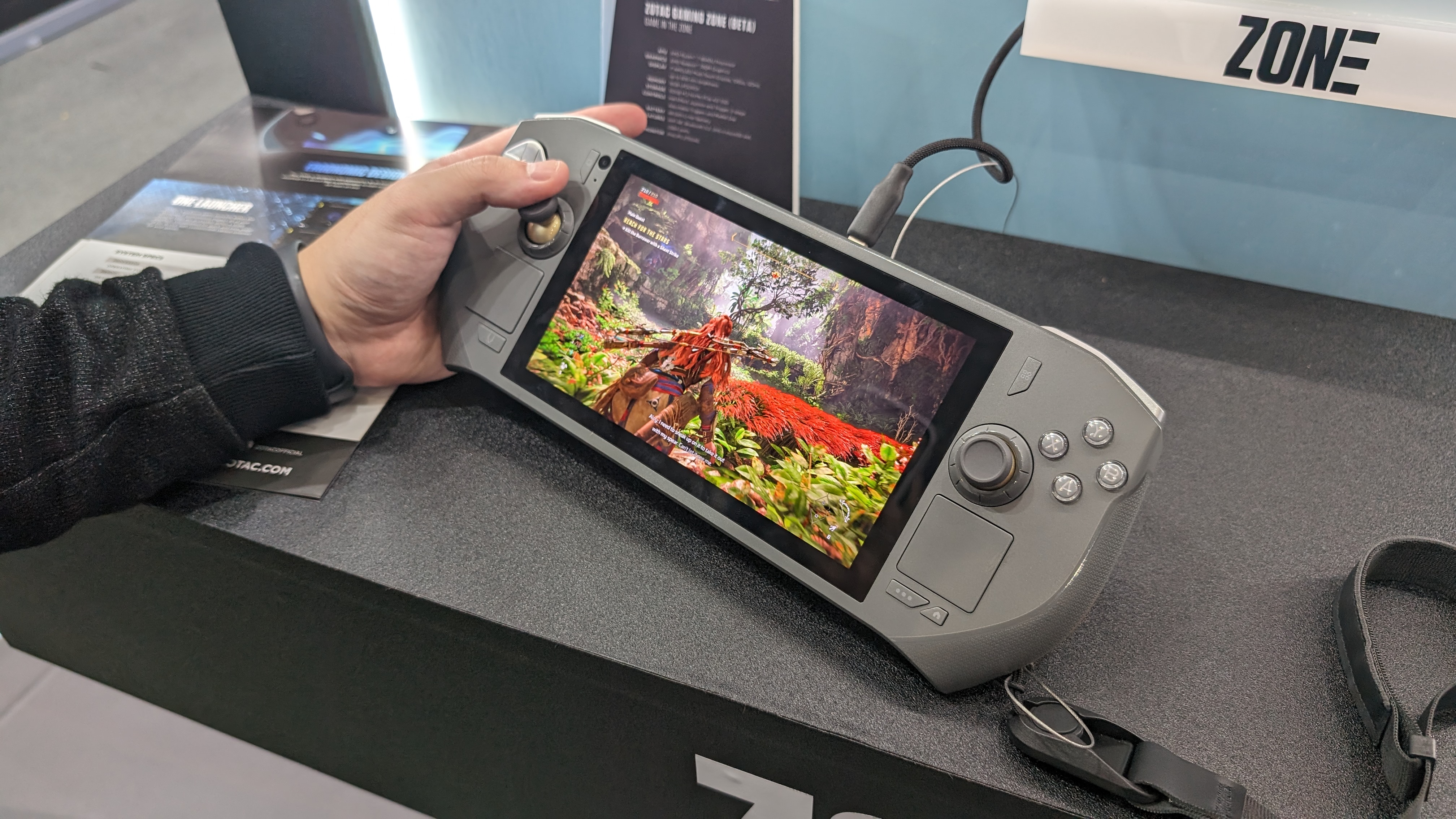
It's also worth noting that just like every other Windows-based gaming handheld, the OS is poorly suited to this device format. Even with a touchscreen and trackpad, the small display and lack of a physical keyboard make navigating Windows 11 rather cumbersome. I can't really blame Zotac for that, though - it's a frustration of Microsoft's making, and I've already given them the solution...
The factor that may truly prove to be the Zone's downfall, though, is the price. While Zotac hasn't officially confirmed pricing, Spanish tech site Geeknetic has reported that the launch price is expected to be around $800 (about £625 / AU$1200). That's rather expensive considering the specs here; the ROG Ally X is expected to be around the same price, but packs more memory and storage, while the Steam Deck is significantly cheaper than both.
Still, I'm excited to see the Zone hit the market so I can properly test it out. Competition breeds innovation, as they say; more PC gaming handhelds can't be a bad thing. But the competition is really starting to heat up now, so Zotac will need to bring its A-game if it wants to capture a segment of this emerging market.







